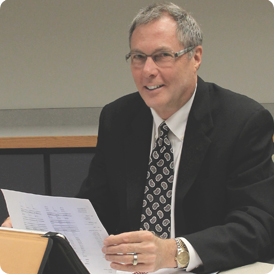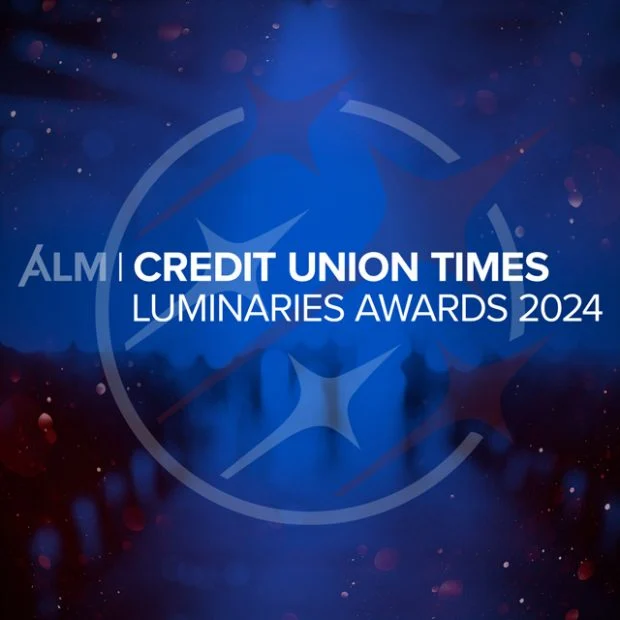 A high-fidelity information technology organization has minimal amounts of unnecessary noise and distortion and an accurate frequency response to the strategic direction of its credit union.
A high-fidelity information technology organization has minimal amounts of unnecessary noise and distortion and an accurate frequency response to the strategic direction of its credit union.
The credit union industry should expect its IT teams to become high fidelity, not just a needed cost. We need IT organizations in our credit unions that help us amaze our members.
There are four elements to building a high-fidelity IT organization:
- The ITO has a deep understanding of the quality of the member experience across all physical and digital channels; the ITO knows the “moments of truth” where we can delight or disappoint the member.
- The ITO has capable project leadership talent; the project managers are leaders that can defend and implement a project's vision, and the PMs are advocates for the business unit's vision, not for technology for the sake of technology.
- The technology strategy clearly supports the credit union's business strategy and focuses more on building integration capabilities rather than building the end user solutions.
- The ITO is a compelling work environment, where each IT professional believes she or he is in the middle of vital work and has a deep affinity for the credit union's business.
Understanding the member experience across physical and digital channels. In 1988 my first CIO gig was at Seattle Children's Hospital & Regional Medical Center. The ITO was business office-centric with a focus on revenue cycle, admissions and scheduling. The ITO's empathy for the clinical side of the business was low. We needed to change this fast.
We did this with two actions: First we challenged ourselves that our 2,000-plus employees would, within six months, be able to say they “loved” working with the ITO. Second, we became clinical analyst-centric rather than developer centric. To strengthen our clinical analysts' capabilities, we recruited lab techs, RNs and even became among the first hospitals to have an MD on the IT staff.
We changed the atmosphere of the ITO from financial operations to include clinical operations. Fast forward to today and we see the health-care industry still working to implement electronic medical records. Those ITOs with clinical experience empathy are going to do well.
We followed a similar path at BECU, starting in 1999. We selected a path of buying software rather than building it, developing competence in integration and strengthening our business analyst team. Today, our BA team is generally in the center of our support to the BUs.
Our BAs are often former bank or credit union professionals with experience in lending, member care, call centers, collections, etc. We have a deep empathy for the business of the credit union. Our BA teams help the business units to better understand the capabilities of their specific applications. Our BAs are also involved with vendor user groups.
Leaders need to ask, “What is the atmosphere of your ITO?” is it focused on technology or on amazing our members?
Read More: Project leadership capabilities … Excellent project leadership capabilities. Let me say right off, we rejected the PMO (project management office) model. Research indicates a PMO is often where relationships die, visions die, and bureaucracy takes root. PMOs can also become process factories rather than outcomes champions.
There are also two types of PMs. The first are project administrators with their credentials, work breakdown structures, flow and pie charts. This skill set often leads to lots of work and no tempo; perfection over outcome, and every barrier seen as huge. The second type of PM is an outcomes leader with the ability to help the BU team craft a compelling vision for the outcome and then drive for results.
It took us several years to discover how to recruit project leaders vs. project administrators. These folks can work with the BU to develop a compelling vision for the project, can keep the vendor and all stakeholders focused and committed to the vision, and actually deliver an outcome.
Another discipline we implemented was what we call “outside-in” thinking. This means we always start with the member experience we want to improve and then work backwards to the solution that achieves that vision. A project worth doing is a project with a compelling vision. We would suggest there are two meaningful drivers for a project: to improve the member experience, or to reduce costs. OK, I hear you. Compliance would be a third reason.
The final test of your PMs is while they may be on the ITO budget, the BUs love working with them, trust them and seek them out.
Develop a technology strategy that helps keep the ITO focus on the member. If you ask developers at BECU what their primary job is, they will tell you building integration applications designed to improve the member experience. Our recent implementations of an affinity pilot with Starbucks and personal financial management software provider MoneyDesktop demonstrated our integration capabilities. Both companies were impressed with our speed of integration.
We also track IT projects separate from enterprise projects. Both set of projects deserve transparency and accountability. But we try to avoid IT projects from getting in the way of high-priority enterprise projects.
The financial services industry has a significant software solutions vertical market. We believe we should not custom-build software, but instead be highly capable in integration. Integration is often the secret sauce to agility.
Read More: A compelling work environment …
The ITO is a compelling work environment. Our industry needs top IT talent in order to implement most of our strategies. Too often we believe the myth that we are at a disadvantage in recruiting IT talent. The Seattle area includes headquarters for the following: Expedia, Costco, Alaska Airlines, Weyerhaeuser, Nordstrom, Starbucks, PACCAR, Amazon and Microsoft. Google also has a growing presence. There is no shortage of very cool IT opportunities.
Look around your own market. You might be surprised. It only takes one or two good people to make a huge difference in your smaller shop.
We have taken the approach that the “soft stuff” is the most valuable stuff. The human spirit is attracted to purpose, team autonomy, healthy accountability and believing we are all in the middle of vital work. Credit unions have great purpose. We own the ethical high ground in financial services. Offering candidates a chance to work with contemporary technologies in an environment that offers a meaningful purpose and the team autonomy to have fun succeeding has proven to be a key to recruiting and retention.
Over the years, I've learned that building a compelling work environment is my most important duty. It should be the most important job of every leader.
By now you may be asking where is the stuff about architecture, cloud computing, mobility, security, co-sourcing, virtualization. We all do this stuff. But too often the technology of the day is where many IT professionals run to avoid the hard work of relationships, understanding and communicating the direction of the credit union, and orchestrating the ITO toward the member experience. We need to deliver both.
The four principles briefly described here have proven to be a sound foundation for building an ITO that is highly relevant to the credit union and is a cool place to work for an IT professional.
The credit union industry should be or is aspiring to be a much larger market share for retail banking services for the United States. An ITO that is focused on the member experience as much as on technology will be a valuable asset for all of our credit unions.
Butch Leonardson is CTO and SVP of information technology at BECU in Tukwila, Wash.
© 2025 ALM Global, LLC, All Rights Reserved. Request academic re-use from www.copyright.com. All other uses, submit a request to [email protected]. For more information visit Asset & Logo Licensing.







